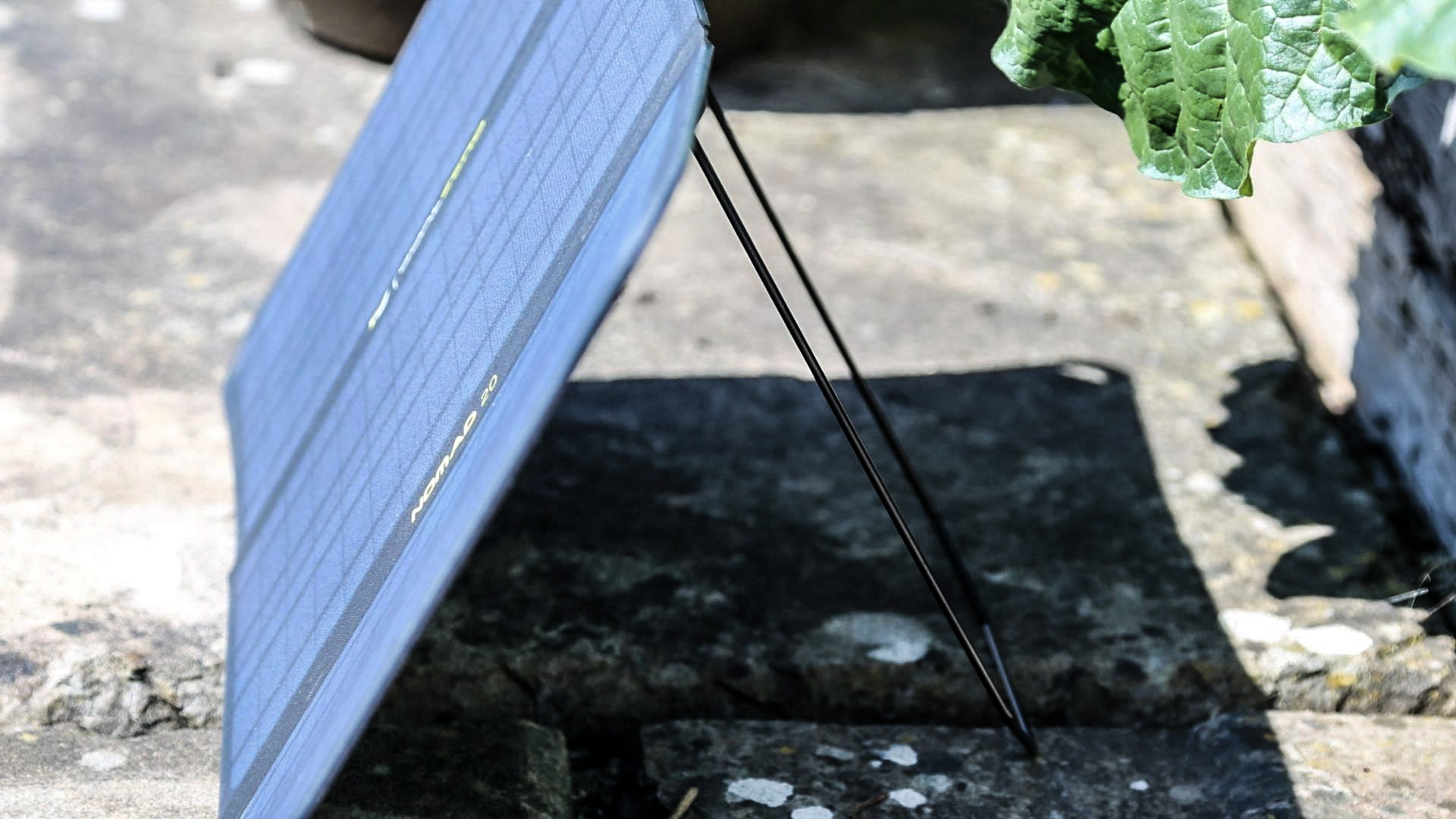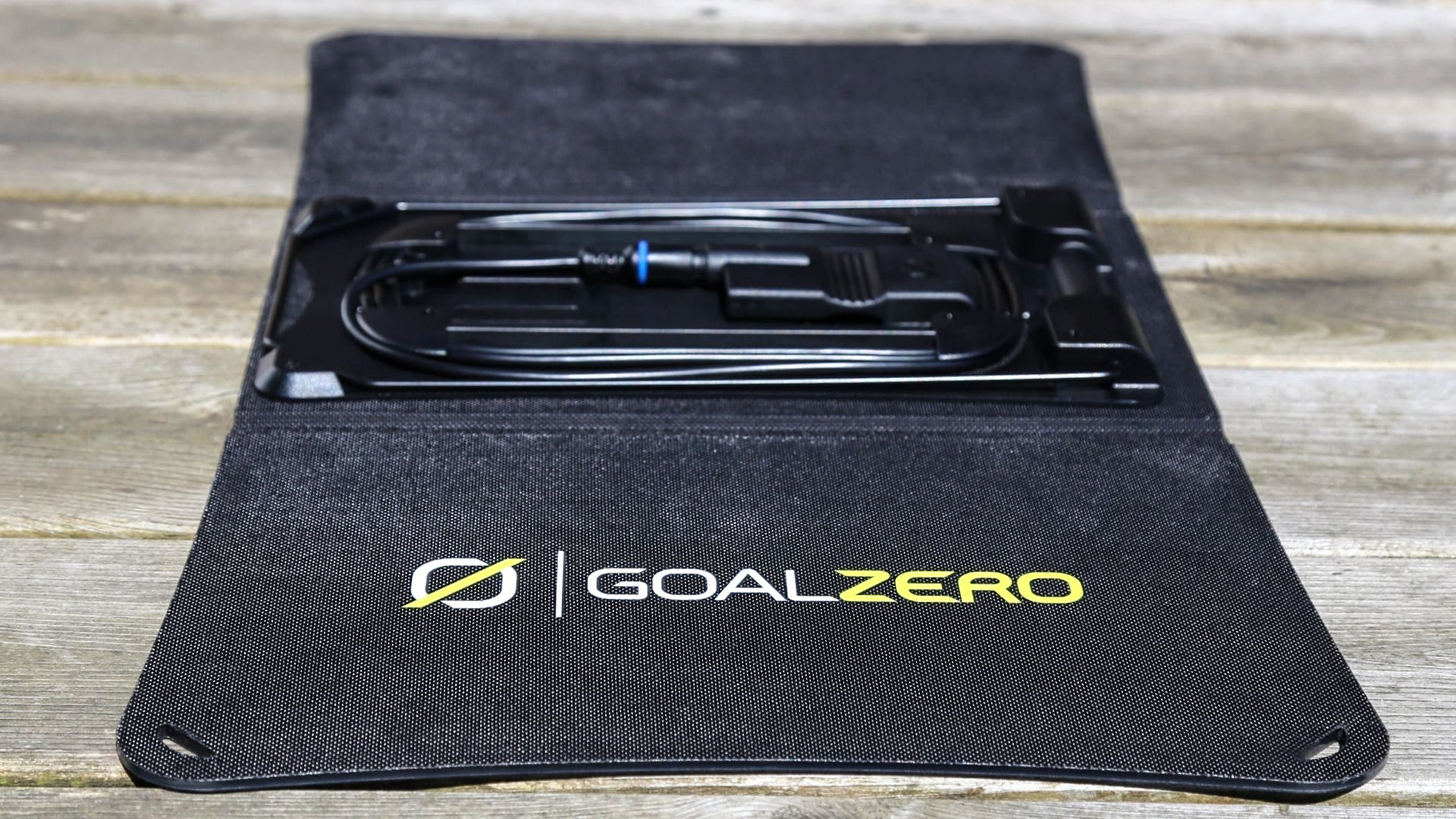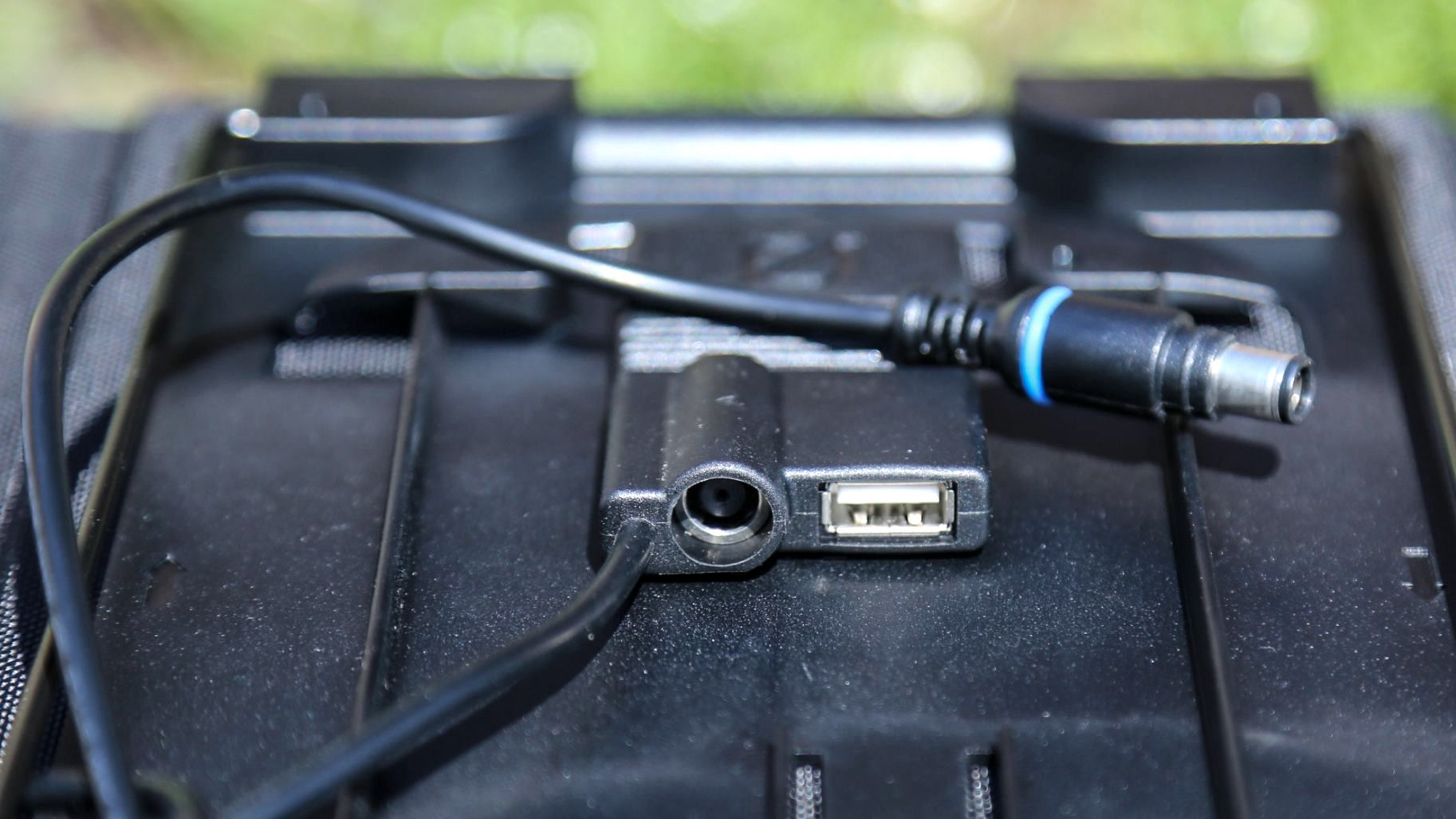Digital Camera World Verdict
A sturdy and reliable solar panel for recharging small devices that can be daisy-chained to other products to create a mini-solar farm. However, it’s relatively heavy and has built-in cables many users won’t need.
Pros
- +
10W into smartphones
- +
20W into power stations
- +
Sturdy build quality
- +
Easy to use
Cons
- -
Heavy at 1kg
- -
Built-in cabe is annoying
- -
Expensive
Why you can trust Digital Camera World
Have you got a solar charger yet? Although traditionally seen as an expensive, large and a somewhat specialist item, products like the Goal Zero Nomad 20 are quickly going mainstream. However, while consumer-grade solar panels for off-grid living are popular in some parts of the world, small, travel-friendly products like the Nomad 20 that are most suited for short trips with a smartphone.
The Nomad 20 is all about simplicity. A ‘personal’ solar panel that folds up for easy travel, it produces up to a maximum of 20W for recharging small portable power stations, and a little less for recharging everything from smartphones and power banks to cameras and LED lamps.
Goal Zero Nomad 20: Specifications
Power: 20W
Size: 292x19x32 mm/11.5x7.4x1.25” (folded)/292x553x19 mm/11.5x21.7x0.75” (unfolded)
Weight: 1kg/2.28 lbs
Connections: 8mm Solar Port, USB-A
Key features

The Nomad 20 is effectively three separate solar panels each measuring about 185x292mm. They’re joined up to create a still relatively small solar panel measuring 553x292mm. The central solar panel in that array is backed by a kickstand, a simple aluminum design that can be snapped shut to the back for travel and set in various positions for aligning best with the Sun.
The best camera deals, reviews, product advice, and unmissable photography news, direct to your inbox!
Surely solar panels are somewhat brittle and delicate, right? That's absolutely not the case with the Nomad 20, which is about as durable and outdoorsy a product as we can imagine. The photovoltaic panels are placed behind a sturdy plastic covering, while the four corners of the unfurled solar panel have cut outs so that the entire product can be tied to, or hung from a tent, guy ropes or perhaps the side of a backpack or camera bag.
Whether the Nomad 20 can be used to refuel your camera's battery depends on what model you have; on the rear is a USB 2.0 port that can take any cable you might want to use. It’s rated at 5V/2.1-amps and can send up to 10.5W into anything you attach to it. That could include a camera that allows in-camera charging of the battery as well as a camera charger that uses USB.
Another cable back there is an 8mm cable that plugs directly into a portable power station such as the same brand’s Yeti range. That turns the Nomad 20 into a very portable option for using off-grid in camps, but its small size means it’s going to take an awfully long time to fill anything other than small gadgets and batteries. However, another use for the 8mm cable is to daisy-chain it to a second (or third, or fourth) Nomad 20 to create a useful array.
Build and handling
The Nomad 20 is rough enough to be used and abused around camp. You could have a couple of these folded-up in the back of a vehicle to unfurl now and again when setting-up a camp in a remote area for, say, a wildlife shoot.
We like the way the Nomad 20 folds out into a relatively large solar panel and retains its shape – it doesn’t curl-up at the sides and doesn’t need much propping-up or adjusting. That said, it works best when used on grass, which offers plenty of resistance to it bending out of shape. However, one of the reasons it's so stable is because it's so heavy, at least when compared to the competition. For instance, the BioLite 10+ solar panel – which cannot be used with a portable power station, but will put the same 10W into a smartphone or camera battery – weighs about half as much.
Performance
The Nomad 20 proves itself to be an exceptionally sturdy and reliable portable solar panel, though there are a few things we don't like about it. For example, the 8mm cable for attaching it to other solar panels and directly to a portable power station is a permanent fixture. Yes, it can be coiled up on the back of the central solar panel, but it’s a bit of a messy solution and it does add to the weight (partly because the cable itself stretches to a whopping 180 cm).
It's tempting to wish the Nomad 20 had a built-in battery, like some of its rivals do, though there is an easy way around this. Attach any portable battery to the Nomad 20’s USB 2.0 slot and you can not only make sure the Nomad 20 is being used every time the Sun is shining, but you can attach your gadgets directly to the portable battery. Do that and it takes about three hours to fill a smartphone and about six hours of full Sun to recharge a 10,000mAh portable battery. However, some clouds can double that time, so we’d be careful relying on the Nomad 20 for all your power needs.
Although you can technically plug any USB cable to the Nomad 20 for recharging, do bear in mind that you have to leave the gadget in question positioned very close to the Nomad 20, ideally in its shade away from the direct sunlight. Do that and your gadget will be left in shade, though the panel itself can get pretty hot during use.
Something else it lacks when compared to other products is a sundial, which allows you to aim the solar panel directly at the Sun. Doing so can increase the intensity of the sunlight it collects by about a third.
Goal Zero Nomad 20: Verdict

A useful and, in the long-term, free way to top-up your gadgets, the Nomad 20 is a little heavy and its built-in 8mm cable is a little annoying. Similar products to the Nomad 20 have a built-in battery, which not only means they can be collecting energy even when a gadget isn’t connected, but that it can be dispensed when skies are gray. That's not the case with the Nomad 20, which is only going to be of any use in clear skies, though you can upgrade it simply by attaching your own portable battery. With a tough outdoorsy design and a reliable performance the Nomad 20 is among the best portable solar panels available.
Read more
Best iPhone battery pack
Best laptop battery pack
Best solar chargers
Best travel cameras
Best satellite phones
The best iPhone charger
The best iPhone charger cable

Jamie has been writing about photography, astronomy, astro-tourism and astrophotography for over 15 years, producing content for Forbes, Space.com, Live Science, Techradar, T3, BBC Wildlife, Science Focus, Sky & Telescope, BBC Sky At Night, South China Morning Post, The Guardian, The Telegraph and Travel+Leisure.
As the editor for When Is The Next Eclipse, he has a wealth of experience, expertise and enthusiasm for astrophotography, from capturing the moon and meteor showers to solar and lunar eclipses.
He also brings a great deal of knowledge on action cameras, 360 cameras, AI cameras, camera backpacks, telescopes, gimbals, tripods and all manner of photography equipment.




